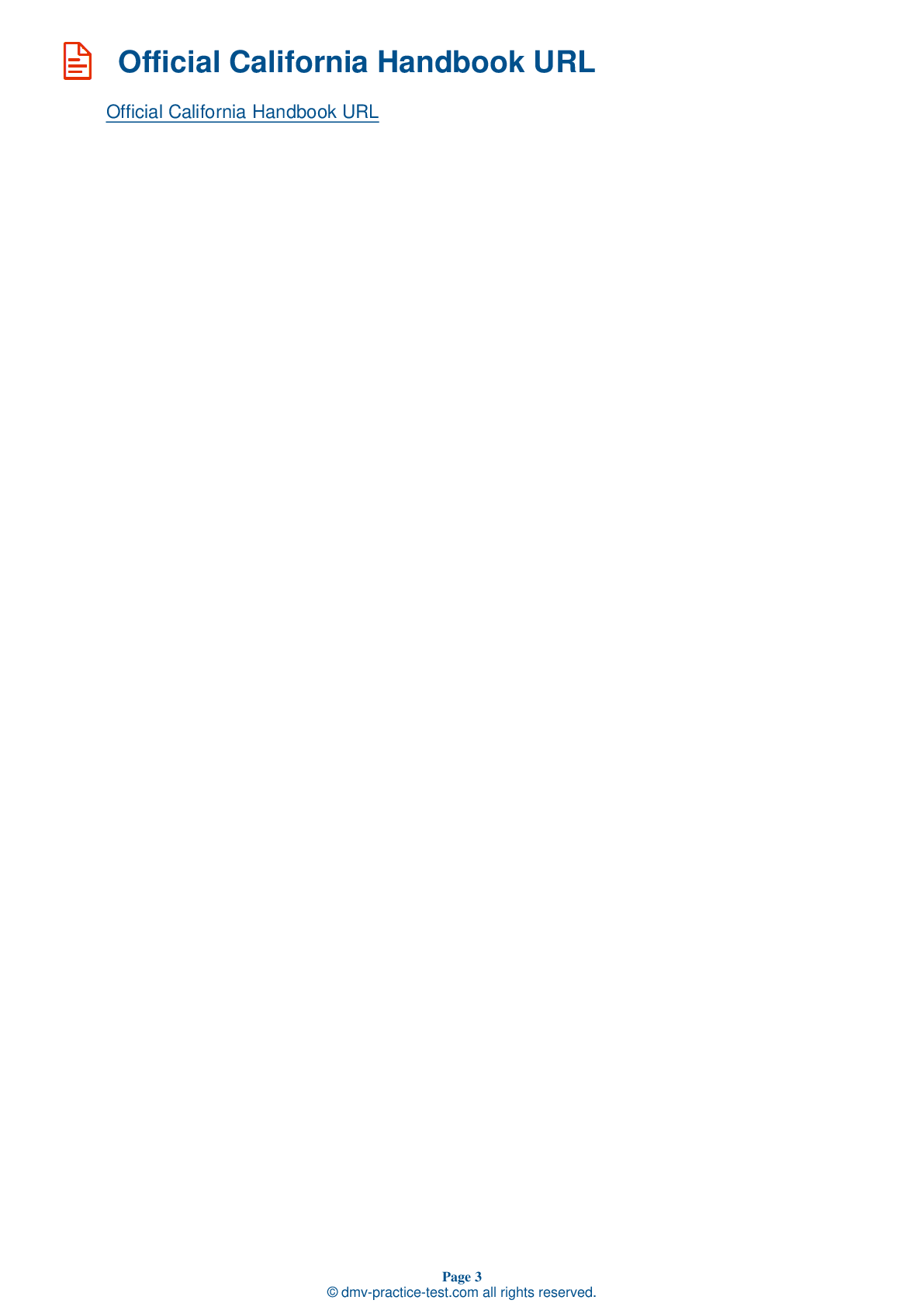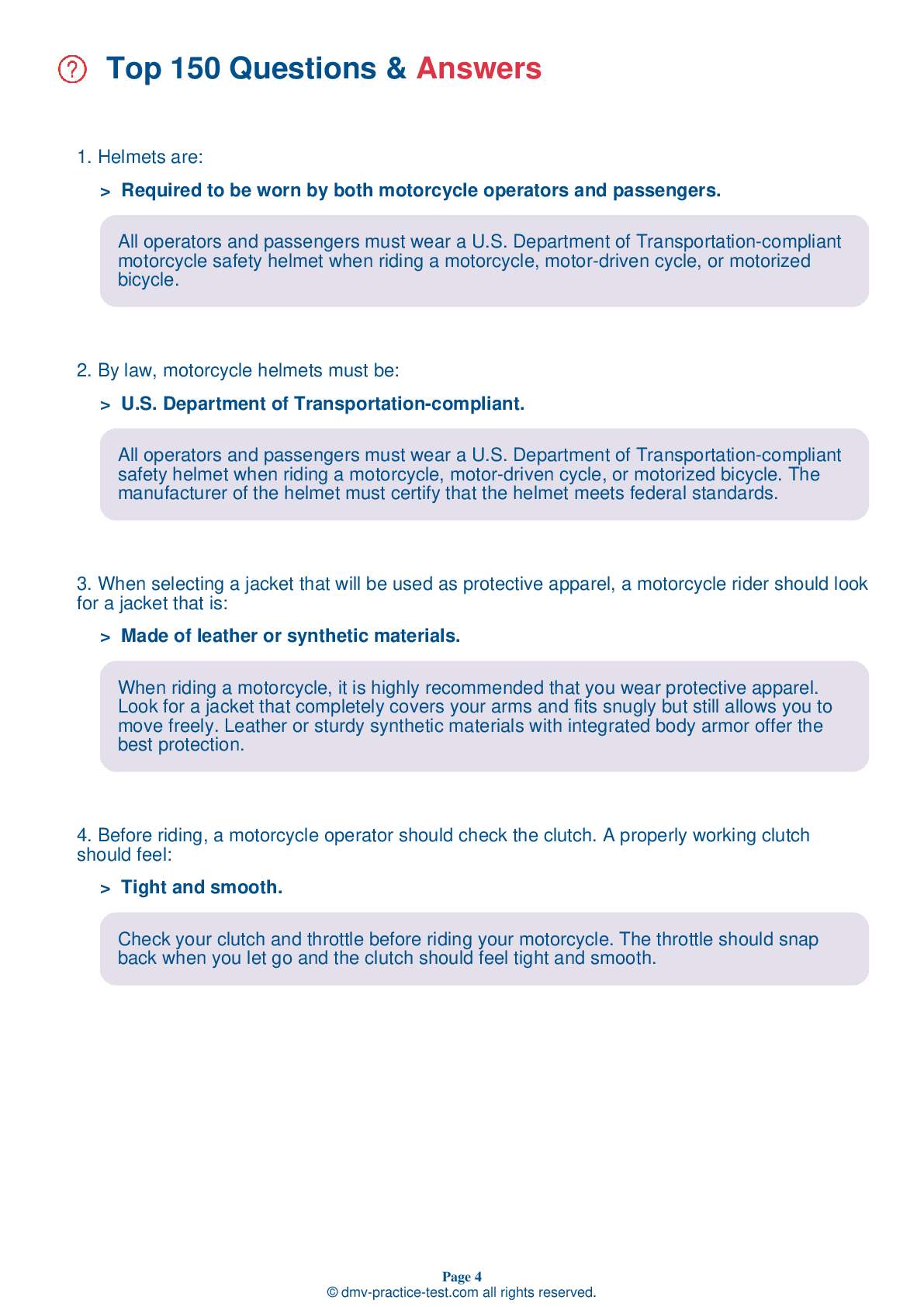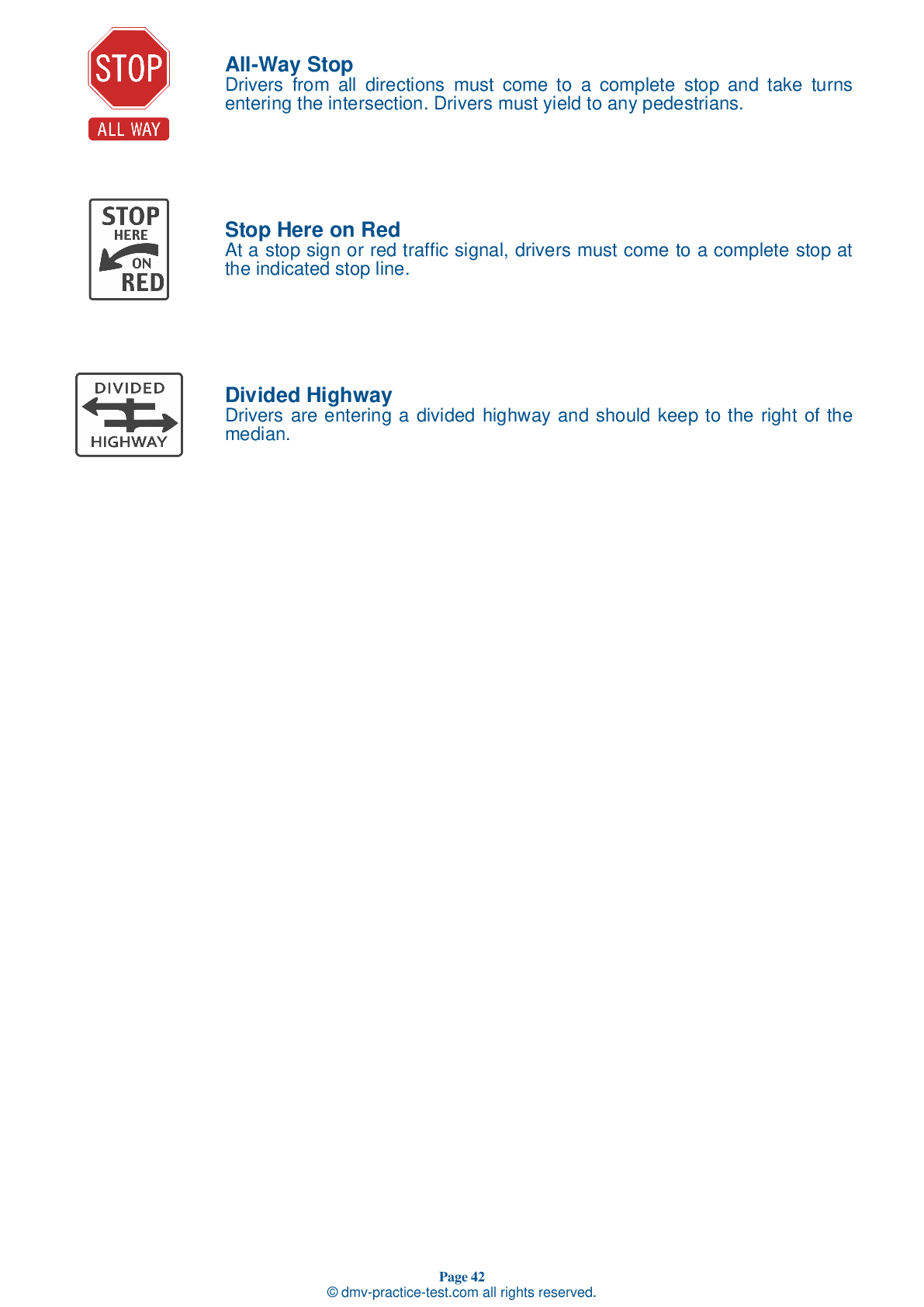Motorcycle Test | License CA 2025 | FREE Online Practice! #8 Page 3 of 4
Take this FREE motorcycle test (license in CA 2025) to check your knowledge of the road rules. To improve your results, download a motorcycle handbook online, study theory, and practice for free on our website. Still worried about how to get a motorcycle license in California in 2025? Check our website for more sample tests, train as much as possible, and boost your grades!
17 . If another driver is following you too closely, you should:
If someone is following you too closely, it is a good idea to flash your brake light before slowing down. A tailgater may be concentrating on you and not see upcoming hazards that require traffic to slow down.
18 . When changing lanes, you should:
Before changing lanes, make sure no other drivers are going to be in your path. Do this by checking your mirrors and looking over your shoulder in the direction you want to move.
19 . Usually a good way to handle tailgaters is to:
The best way to handle tailgaters is usually to change lanes and let them pass. Speeding up may only increase the danger by prompting them to continue tailgating you at the higher speed.
20 . When riding at night:
When riding at night, you should increase your following distance. Slow down and be flexible about your lane position.
21 . A motorized bicycle or moped cannot travel faster than:
In California, a motorized bicycle or moped is defined as a two- or three-wheeled vehicle that is capable of traveling at speeds no faster than 30 miles per hour on level ground.
22 . If your motorcycle starts to wobble, you should:
Do not try to accelerate out of a wobble because doing so will only make the motorcycle more unstable. Instead, grip the handlebars firmly, slow down by gradually closing the throttle, move your weight as far forward and downward as possible, and pull off the road as soon as you can. Avoid applying the brakes, as this may also worsen the wobble.
23 . To operate a motorcycle with a sidecar attached, you must have a _____ license.
A Class M2 license allows you to operate a motorized bicycle, moped, or motorized scooter. A Class M1 license allows you to operate all of these, as well as any two-wheeled motorcycle or motor-driven cycle. A Class C license allows you to operate a motorcycle with a sidecar attached, a three-wheeled motorcycle, or a motorized scooter.
See the exact questions that will be on the 2025 California DMV exam.
99.2% of people who use the cheat sheet pass the FIRST TIME
Jeneen was tired of paying $5/gallon. She got herself a scooter that required the motorcycle license. She studyed the motorcycle test cheat sheet and passed her test the next day!
Christopher tells us how he knew nothing prior to obtaining the motorcycle study guide, and he only got one question wrong because he clicked on the wrong answer by mistake.



